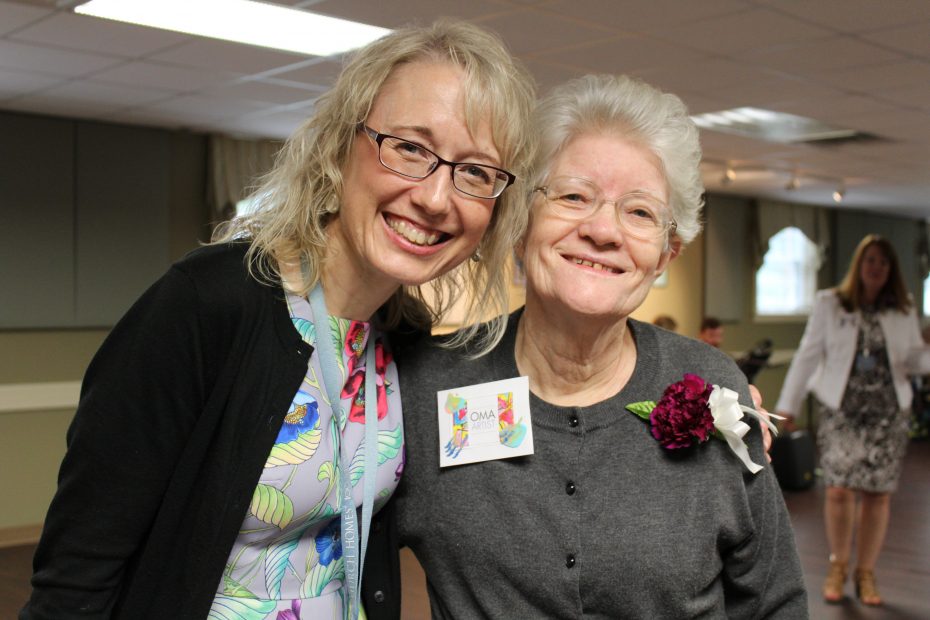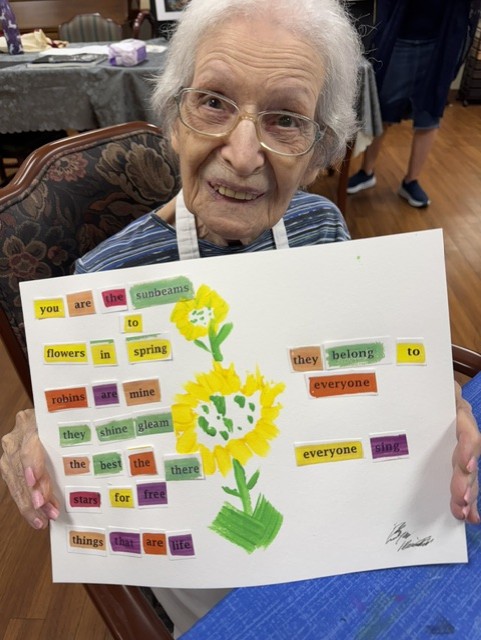In her article Top 10 Spiritual Practices for Older Adults Living at Retirement or Long-Term Care Communities, Nancy Gordon notes, “For many, spirituality is the core of who they are and their way of being in the world.” She goes on to discuss “spiritual practices that can deepen our awareness of the essential spiritual part of life and provide frameworks for navigating aging with grace and zest.” Creativity is one such spiritual practice that has the ability to transform the journey of aging.
Anyone can engage in the spiritual practice of creativity through acts of drawing, writing, photography, singing, playing musical instruments, yoga and dancing.
According to the article (Eng)aging with the Arts has its Benefits, “The evidence indicates that: singing improves mental health and subjective wellbeing (i.e., perceived quality of life), taking dance classes bolsters cognition and motor skills, and even lessens the likelihood of developing dementia later in life, playing a musical instrument has myriad positive effects, including dementia risk reduction, (and) visual arts practice generates increases in social engagement, psychological health and self-esteem.”
Utilizing visual arts as a spiritual practice has become a focus within my ministry with older adults. As a trained facilitator for the Opening Minds Through Art (OMA) program out of Miami University (Ohio), I have witnessed the benefits the spiritual practice of creativity has on older adults living with dementia and the intergenerational team members who volunteer their time to journey creatively with our artist-residents.
Creativity and Psychological Health
At the start of each art session, volunteers ask OMA artists how they feel in that moment. One person said that he felt neutral as he entered the time of creativity. Forty-five minutes later, after having completed his artwork, the volunteer again asked how he felt. His response?
“This made me happier. It made me feel more alive.”
One could also observe the happiness he was experiencing as noted in his facial expressions and in his body language. After another creative session, the volunteer paired with an artist noted that the artist was more relaxed.
Another artist said she “had a very good time” practicing creativity. Again, it was not just her words that conveyed her sense of happiness. We found other clues in the tone of her voice, the way she acted and her body language.
It was not just the ability to create that brought forth feelings of joy, happiness and relaxation; the artists also had the opportunity to view and interact with creative elements such as paint, glitter, yarn, ink, leaves, brushes and cheesecloth. One artist, in fact, named his response to working with creative elements. He said, “Good colors brighten my day.” I could not agree more. Even the simple act of looking at pallets of paint, in our experience, may spark an inner sense of joy and peace.
Creativity and Building Self-Esteem
I observed during each art session older adults who were not just happier, yet too whose self-esteem increased. After viewing her art piece at the end of one session, an OMA artist said she was “happy (she) did it.” Another artist exclaimed, “I can’t believe I did that!” However, one of the most memorable examples for me as to how creativity as a spiritual practice builds self-esteem came at the end of an art session.
The artist viewed his work and exclaimed, “I didn’t feel like I could do anything new. The room is bright and the people are happy. Amazing how it changes your attitude.”
Being creative impacted how these people living with dementia viewed themselves. Creativity gave them each the gift of abundant life.
Creativity and Building Community
As I work with older adults living with dementia as they create works of art, I have found it is a bonding experience. There is talking and singing as we work on art projects. I have found that the act of being creative in the company of others leads to community building as we encourage one another. One OMA artist said, “I love singing. I love being around other people.” Being creative together helps to combat loneliness.
Creativity: Creating A Sense of Meaning and Purpose
Lastly, during creative sessions, I have observed older adults finding meaning and purpose in their artwork and singing. Being creative together combats boredom in the groups I have observed. “I had a very good time,” one person living with dementia said after an art session. Yet another person commented, after looking at his art piece, “I can hang that on the wall, every time I get sad I can look at it.” Being creative has touched a deep place of meaning with him and brought him a sense of wholeness and peace.
Questions to ponder
- What are your avenues of creativity?
- How does being creative bring a sense of abundant life and spiritual fulfillment?
- How might the church practice the spiritual practice of creativity during Lent?
- How might engaging in spiritual practices strengthen intergeneration bonds with a congregation?
May you find the Spirit in your creative pursuits today, tomorrow and beyond.
There are a wide variety of spiritual practices one can explore. Please join with us as we celebrate an abundance of spiritual practices on our journey through this season from Epiphany through Lent.
View all articles by:






















